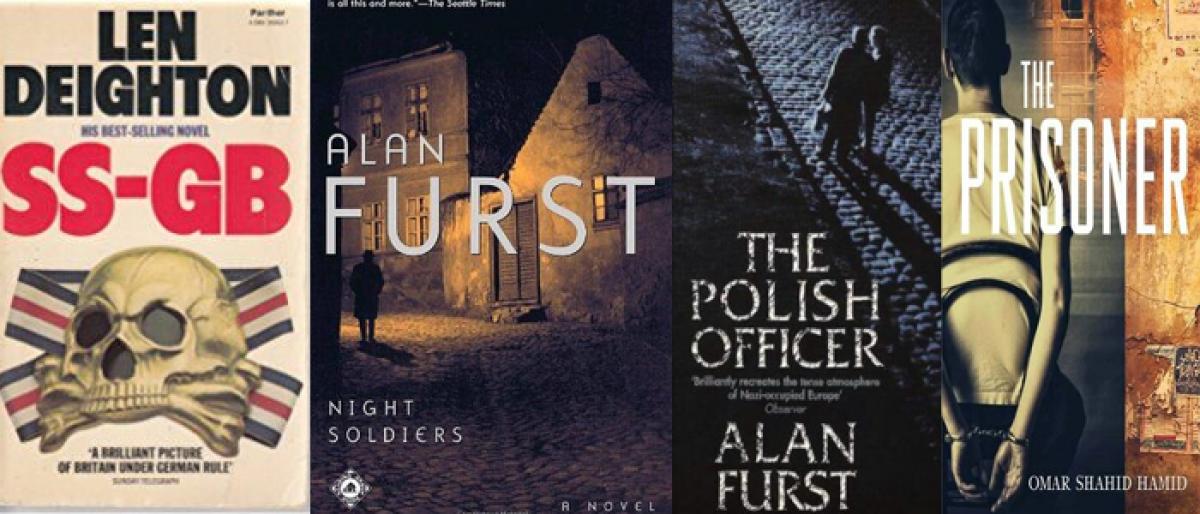Live
- IT Raids on Ex-MLA Grandhi Srinivas Continue for Third Day in Bhimavaram
- Jharmunda-Boudh section gets CRS nod
- Upcoming Telugu OTT Releases This Week: Devara, Meiyazhagan, Kali
- Trapped leopard rescued
- Vijayawada: Seven police officers get IPS rank
- Stress may help stay alert in dangerous situations
- Chandrababu and PM Modi extends birthday wishes to Telangana CM Revanth Reddy
- Montfort games from tomorrow
- Special courts to speed up justice delivery: CM
- Andhra Sugars aspirin unit passes US FDA check
Just In

And they happily lived ever after\" is usually an ending found – or desired – in fairy tales. But further adventures are always possible for the protagonists, with the journey continuing after both achievements or disappointments, as new challenges arise. This seems to explain why some of the most famous literary characters go on for quite long. Do others too?
"And they happily lived ever after" is usually an ending found – or desired – in fairy tales. But further adventures are always possible for the protagonists, with the journey continuing after both achievements or disappointments, as new challenges arise. This seems to explain why some of the most famous literary characters go on for quite long. Do others too?
Sherlock Holmes, James Bond, Harry Potter, Philip Marlowe, Hercule Poirot, Captain Nemo, Kim, the Hardy Boys (or Nancy Drew for that matter), Bertie Wooster and Jeeves, George Smiley, Arthur Dent (of ‘Hitchikers Guide to the Galaxy’) are some prominent examples across major genres.
In India, where the phenomenon is not very common yet, there is Satyajit Ray's Pradosh Chandra Mitter 'Feluda' . But what about the characters that just appear once and are in a literary limbo?
Was Phineas Fogg content with his routine lifestyle after his round-the-world trip? What was the subsequent life of Jane Eyre or Elizabeth Bennet like? What did the Count of Monte Cristo go on to do after his long and elaborate revenge? What other cases did Sam Spade take up after solving the Maltese Falcon matter?
All devoted readers will have favourite characters they would like to see more of, with their appetite scarcely being whetted with their sole appearance. Perhaps since we have left them soon after they have performed their quest, found the love of their life, or otherwise found closure or some measure of stability or security – though the future ahead is still uncertain
If we use only the last scenario as a yardstick, the obvious genre is of thrillers, including those in alternative futures. This may owe to the fact that this particular sphere has a number of prolific authors skilled in spinning entrancing yarns across one particular character and then for their next, create someone else entirely to replicate their narrative magic.
So let us take, say, half-a-dozen cases, where some masters of the art have created some unique characters but limited their appearances to one only – so far. A good example to begin with is Len Deighton, deemed one of the top spy novelists of all time along with Ian Fleming and John Le Carre, but unique in spinning long series along with stand-alone works. And it is the latter which must be considered here.
Take his chilling ‘SS-GB’ (1978), set in Nazi-occupied Britain, and now known to a new generation through the BBC TV series.
It ends with a considerable number of characters killed in pursuance of a plan to preserve King George VI's reputation and draw the US into the war, but what is the future of its hero – Detective Superintendent Douglas Archer of Scotland Yard, who is otherwise safe but still in his country. Doubtless there will be a new set of challenges.
There is Jimmy Ross of ‘City of Gold’ (1991), set in Cairo during the middle of World War II. Being brought to Cairo for court-martial, he, by a quirk of fate and some quick thinking, is put in charge of unearthing a spy feeding information to the approaching forces of Desert Fox, Field Marshal Edwin Rommel. He performs his task at the risk of his life, but his disguise is rumbled and he is to be posted to India. It is certain his career there would be of considerable interest, as would be of most other characters in the tale.
Alan Furst, who is known for his historical spy novels set before and during World War II, has made an entire career of this trend. Of the 14-set ‘Night Soldiers’ series, only the first eponymous one ends with the war over and all the principal protagonists resettled, and all the others end up with their heroes currently safe but still in Nazi-occupied Europe or, at best, a neutral country.
Virtually all his heroes' future would be of interest, but if asked to pick three, the top would be Captain Alexander de Milja of the Polish General Staff (‘The Polish Officer’, 1995), who escorts out his country's gold reserves and returns to help the resistance in Paris and Warsaw – and ends up with partisans in Soviet Ukraine.
Then there is Greek police detective Costa Zannis (‘Spies of the Balkans’, 2010), who is helped across the Turkish frontier along with his love after hair-raising adventures in Albania and Yugoslavia but is still a long way from retirement, and French film producer-turned-resistance fighter Jean Casson of ‘The World at Night’ (1996) and ‘Red Gold’ (1999).
The subcontinent's literature also has some characters we would like to see more off – police officers Constantine D'Souza and Akbar Khan and intelligence operative Col Tarkeen from Pakistan Police officer Omar Shahid Hamid's ‘The Prisoner’ (2013) and a most promising but under-utilised figure from Indian mythology from Krishna Udaysankar's ‘Immortal’ (2016).
We can just live in hopeful anticipation.

© 2024 Hyderabad Media House Limited/The Hans India. All rights reserved. Powered by hocalwire.com







